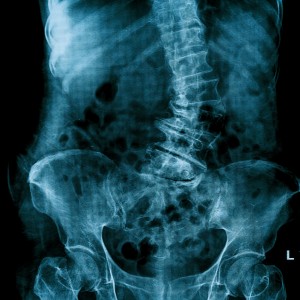New Friedreich’s Ataxia Review Explores Main Features and Current Therapeutic Strategies

 A team led by researchers at Universidade Federal de São Paulo and Hospital Israelita Albert Einstein in Brazil recently published in the journal Neurogenetics a review based on the main clinical characteristics, the pathophysiological mechanisms, and the therapeutic strategies available for Friedreich ataxia. The study is entitled “Milestones in Friedreich ataxia: more than a century and still learning.”
A team led by researchers at Universidade Federal de São Paulo and Hospital Israelita Albert Einstein in Brazil recently published in the journal Neurogenetics a review based on the main clinical characteristics, the pathophysiological mechanisms, and the therapeutic strategies available for Friedreich ataxia. The study is entitled “Milestones in Friedreich ataxia: more than a century and still learning.”
Friedreich’s ataxia is a rare inherited neurodegenerative disease characterized by progressive damage of the nervous system with degeneration of the spinal cord and peripheral nerves that leads to muscle weakness, sensory loss, balance deficits and lack of voluntary coordination of muscle movements. The disorder is caused by a mutation in a gene called frataxin (FXN), more specifically by an expanded guanine-adenine-adenine (GAA) trinucleotide repeats in the first intron (coding unit) of the FXN gene, which leads to a reduction in messenger RNA and the subsequent downregulation of the frataxin protein. It is estimated that 1 in 50 to 100 individuals in Europe, North Africa, the Middle East and India are asymptomatic carriers. The mean age from onset of symptoms to wheelchair dependence has been estimated to be 15.5 years.
In terms of clinical neurological features of Friedreich’s ataxia, researchers found that the main features reported are gait disabilities associated with a progressive ataxia (lack of voluntary coordination of muscle movements), limb weakness, sensory loss, and reduced tone. Most patients also exhibit areflexia (lack of neurologic reflexes such as the knee jerk reaction) and dysarthria (motor speech disorder); abnormalities in the eye movements and dysphagia (difficulty in swallowing) have also been reported. Severe dementia does not occur in Friedreich’s ataxia.
Concerning non-neurological clinical features, Friedreich’s ataxia can affect the heart, leading to cardiomyopathy (where the heart’s muscle function is compromised), causing skeletal anomalies (like a high arch of the foot known as pes cavus, and scoliosis, a sideways curvature of the spine) and induce diabetes mellitus (reported in 10 to 30% of the patients). Cardiac complications are the most common cause of death in Friedreich’s ataxia patients.
The research team also found reports of atypical phenotypes, namely late-onset Friedreich ataxia diagnosed after 25 years of age and even after 40, 50 and 60 years. The symptoms in late-onset ataxia are usually mild. On the other hand, very early-onset ataxia phenotype usually occurs in less than 20% of the cases and is characterized by a more rapid neurological progression.
In Friedreich’s ataxia patients, the iron homeostasis is also disturbed. The assembly of iron-sulfur (Fe-S) clusters (cofactors essential for the proper functioning of several proteins) seems to be regulated by the FXN protein. In the protein’s absence, there is a deficit of Fe-S clusters compromising the activity of several proteins leading to iron accumulation in tissues like the heart and nervous system and to an energetic metabolism failure.
Regarding diagnosis, researchers found that DNA analysis for GAA triplets is the key diagnostic technique for Friedreich’s ataxia. Glucose metabolism tests, brain magnetic resonance imaging (MRI), electrocardiograms and echocardiograms can also be performed to aid on the diagnosis and evaluate disease status.
There is no specific treatment that can halt disease progression in Friedreich’s ataxia patients, although a number of drugs are currently being tested. The therapeutic approaches available for this disorder are based on three key strategies. The first one is to improve mitochondrial functioning by employing for instance antioxidants such as vitamin E, coenzyme Q1, idebenone (an analogue of coenzyme Q), EPI-743 (a variant of idebenone), and deferiprone (an iron chelator). The second therapeutic strategy is to increase FXN expression by using the hormone erythropoietin or interferon gamma for example. The third therapeutic strategy is gene therapy, for instance by the delivery of a vector encoding the human FXN protein. The research team suggests that further studies are, however, required to assess the efficacy and feasibility of each of these therapeutic strategies.






